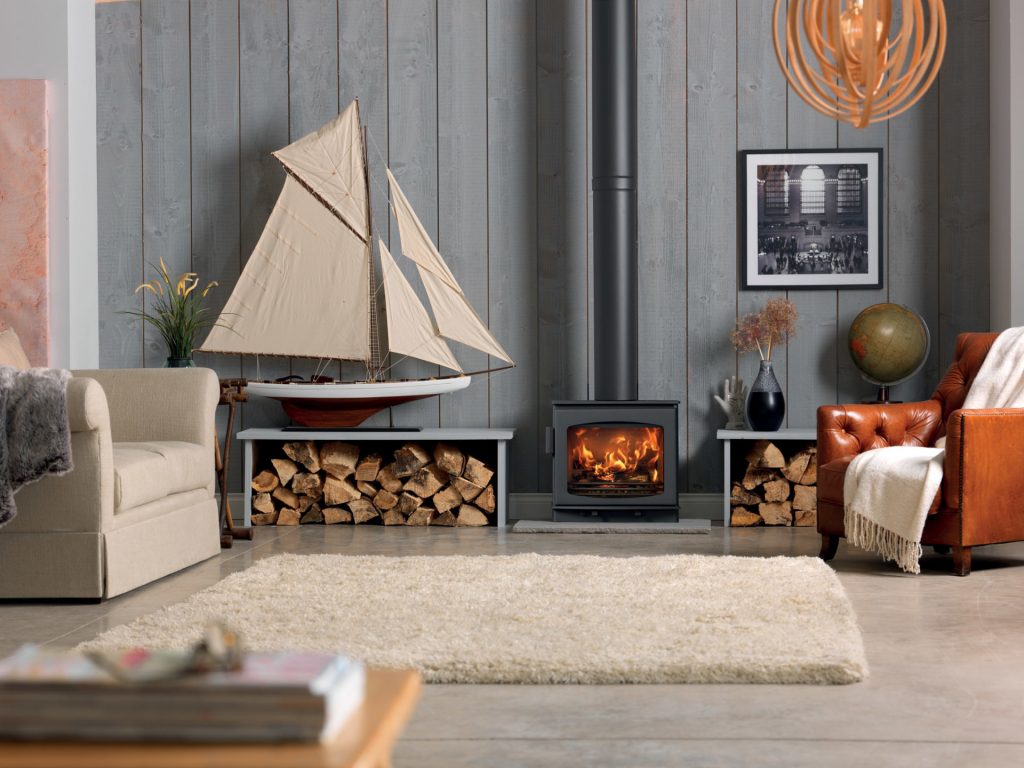We are asked many questions about wood-burning stoves (and multifuel stoves) but one of the most common is about stove paint and why it can start flaking off at a relatively early stage. Many people are obviously concerned about the flaking paint but it is often part of the curing process and extremely easy to rectify.
What causes paint to flak off a wood burner?
When you buy a brand-new wood-burning stove it is obviously the finished article but there is still one last thing, a curing process for the paint. This is specialist paint which is resistant to extremely high temperatures but with a new stove there will still be liquid in the paint. You will notice that over the first three or four days of using your new wood-burning stove there will be a chemical reaction within the paint. This is known as “curing” and is quite simply the process by which remaining liquids within the paint evaporate due to the extreme heat created by your stove.
On occasion you will catch a mild smell of the paint as the excess liquid evaporates but this is nothing to worry about. If the process is allowed to progress naturally then there will be no issues and no flaking paint. However, you do need to be careful!
Avoid touching paint during curing process
As the remaining liquid evaporates from the stove paint it is important that you do not touch the area. The only way that the paint will start to flake off your stove is if it is inadvertently rubbed or caught when handling your stove. This is extremely easy to do; a simple touch of the often moist paint during the curing process can lead to flaking and areas of bare metal. While obviously not the preferred course of action, this is extremely easy to rectify.
All stove manufacturers now supply stove paint cans which can simply be sprayed onto your machine to give the perfect finish. Wood-burning and multifuel stoves tend to come in matt finish and metallic finish paint and it is obviously important to exactly match the type of paint and the colour. So, in the event of flaking during the curing process, or inadvertent contact further down the line, simply keep a can of paint to hand for repair and maintenance.
Check our stove paint section where you can buy online today
Ensure your stove is cold when applying paint
It goes without saying that when applying paint to your stove to cover areas where the original paint has flacked, only do this when the stove is cold – and will be for some time. In the event that your stove is still relatively warm/hot this will stop the paint from “sticking” and it will simply evaporate and fail to dry properly. In reality, unless the stove paint is applied properly you could end up with a worse looking stove than before. So, when repairing your stove paint, time is certainly of the essence.
It is also worth noting that if you fail to cover the area affected by flaky paint then this will expose the metal of the stove. Exposure to moisture will over time lead to rust which can seriously impact not only the efficiency but also the life of your stove. So, the relatively simple process of applying paint to areas where flaking has occurred not only has a visible impact but will impact the operation of your stove.
Stove general repair and maintenance
While many people become concerned when they see paint flaking off their wood-burning/multifuel stove, there is nothing to worry about. The evaporation of excess liquid is a natural curing process and even in the event that it does start to flake it is very simple to rectify. This is just one area of general repair and maintenance which you should review on a regular basis. A simple touch up of flaky paint or replacement of worn parts can save you a lot of money further down the line.

